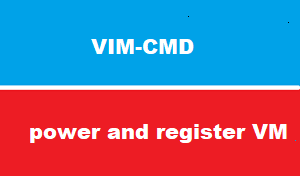introduction
Welcome to the first article of VIM-CMD tool series as part of course vSphere-O&S
In first article we will get an introduction to tool VIM-CMD , before see how to use it to manage all vSphere resources [ Network , Storage ….etc ]
what is VIm-CMD
vim-cmd is a vSphere CLI tool available on every ESXi host and can be used to perform various activities in a VMware environment.
as you know that VIM is stand for (Virtual Infrastructure Management).
register VM
first we get all registered VMs with command
vim-cmd vmsvc/getallvms
we have 2 VM
so we will register Pc101 which will path is [/vmfs/volumes/local-DS02-ESX153/Pc101/Pc101.vmx]
vim-cmd solo/register /vmfs/volumes/local-DS02-ESX153/Pc101/Pc101.vmx








